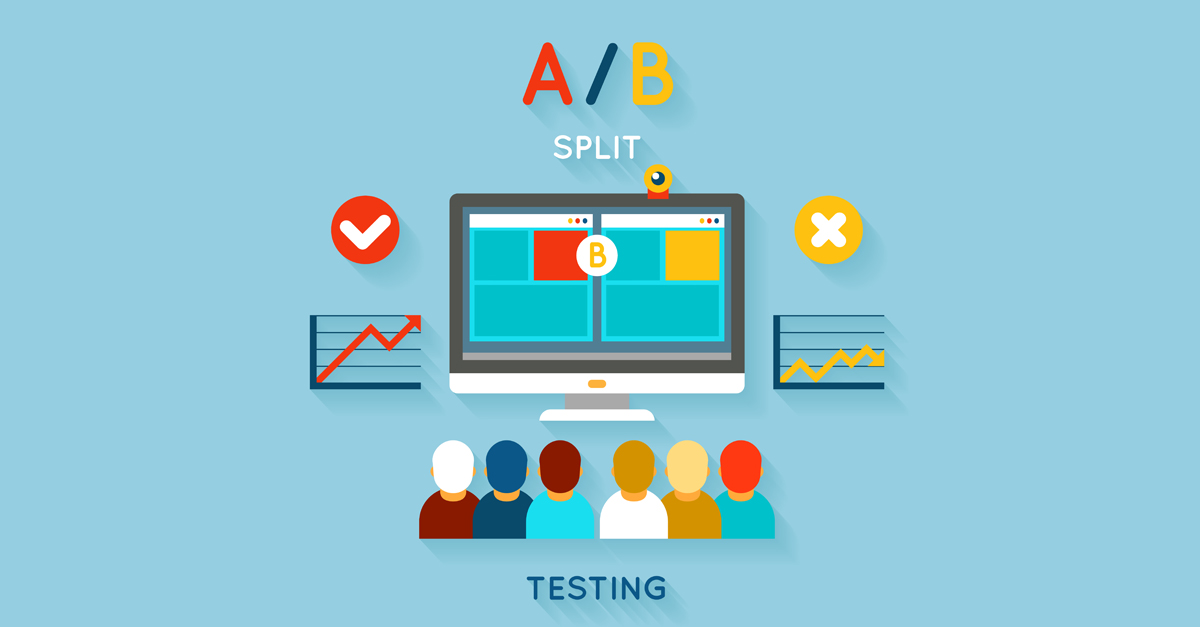The Significance of A/B Testing in eCommerce and How To Do It Effectively
-
 Anup
Anup
- 3 years

A/B testing is a tried and tested methodology for the eCommerce industry. When done right, it helps you derive invaluable insights that you can use to replace non-working elements of your web store with the ones that work wonders and help you generate more profits.
You may face several challenges when running an online store, for example, low conversion rates, high cart abandonment rates, low ROI, and many others.
A/B testing can help you solve all these problems if executed with the right strategy. In this blog, we will check out what A/B testing is and how eCommerce businesses can use it to drive results. So, let’s get started.
Why is A/B Testing Crucial in eCommerce?
A/B testing is a process that eCommerce store managers or owners can use to test the performance of a specific element with their audience. To conduct A/B tests, you split your audience into two groups and show them different versions of what you want to test. It can be a webpage with different typography or an ad with a varied copy.
Then, you collect the results and finally use the version that performed well. Now, you must be thinking why would I do the same work twice? Wouldn’t it be a waste of time? But A/B testing can actually help you save money and time in the long run. Also, you are not required to perform A/B tests on every part of your website.
By only testing the key elements of your online store effectively, you can lessen your expenditure and gain more traction. Here are some of the biggest benefits of A/B testing in eCommerce:
- Better user experience through live customer feedback
- Increased conversion rate and high ROI
- Reduced CAC, churn rate, and cart abandonment rate
- Better decision-making using data
- Improved purchase frequency rate
For eCommerce organizations, A/B testing is a way to continuously test and challenge the standard of their business to ensure they are always prepared for success.
Also Read: An eCommerce A/B Testing Checklist to Increase Conversions
5 Steps to Effectively Conduct A/B Tests in eCommerce
Conducting an A/B test should be simple if you manage it well. Here are five key steps that you need to follow:
1. Research
Every great project starts with research. Before investing in A/B testing, study your brand’s performance to determine what elements need testing. You must thoroughly analyze your eCommerce metrics and KPIs to conduct A/B tests.
This included checking your website’s performance, social media analytics, email marketing stats, and other things like your CRM data. No matter what you try to improve, make sure you compare it to the goals set previously. You can also use heatmap tools to find out what users are doing on your website. It can help you discover where your users are bouncing and what you need to do to keep them hooked.
2. Formulate a Goal
Once you know where your business presently stands, you can easily find gaps and work on eliminating them. Now that you have collected all the data, it is time to do something valuable with it. For example, if you find that your bounce rate is very high on certain pages, you can now work on finding why it is high and how much you would want to decrease it.
However, when setting up hypothesis parameters, make sure you select only one variable for A/B testing. Suppose you want to improve your open email rate and decide to variate everything in an A/B test (including the database you target, the subject line, email timings, and other things). In that case, you will never be able to track the thing that is actually getting results.
Once you decide on a single factor you are testing and develop your hypothesis, it is time to test the other variables.
3. Create a Variable
Now, that’s where the actual A/B testing starts. At this point, you have the customer data, know where there are gaps and have a hypothesis on how you can improve.
So, now is the time to design that secondary variable that you will show to half of your audience. This design will be a bit different from your original one. For example, you may change font size, CTA text, the color of the button, or maybe the logo. Launch this design and see how users get it.
4. Run A/B Test
Now that you have both variables ready, it is time to run the A/B test. Make sure you finalize the time and duration of the test carefully. If your test is too slow, you may not get the right results.
Once this step is done, you will have valuable data to make better and informed business decisions to improve your eCommerce brand’s success.
5. Analyze Results and Make Decision
Now is the time to use the results of your hard work to improve business processes and critical elements. First, analyze the test results and check if they are in accordance with the hypothesis you created earlier. You can check out which version performed well and use it in the future.
Wrapping Up
The key to success with A/B testing is to keep iterating, analyzing, and repeating this process repeatedly. This way, you can continue optimizing your web store, email marketing plan, and social media to get maximum benefits. Contact experts at Envision eCommerce to help you conduct A/B tests effectively to improve your website performance.












